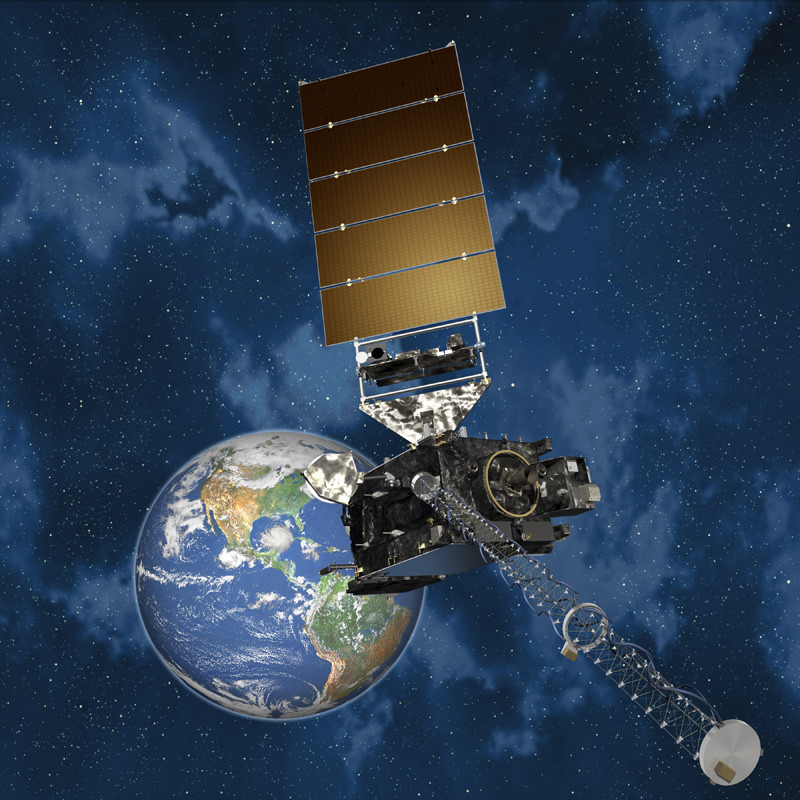On November 19,2016, a new observatory that will revolutionize the way meteorologists study the weather was launched successfully by an Atlas 5 rocket at Cape Canaveral, Florida in the United States. The United Launch Alliance Atlas 5 rocket with the Geostationary Operational Environmental Satellite-R, or GOES-R, sped away from Cape Canaveral at 6:42 p.m. EST (2342 GMT).
Supposedly, was to be held an hour earlier but was delayed due to engineers having to verify a potential concern with a certain component on another rocket to make sure it was no threat to the Atlas, and worked on a problem which was undisclosed with the Eastern Range.
Source: United Launch Alliance
Accordiing to Omar Baez, the NASA launch director, “The flight hardware performed beautifully throughout the count and the weather was perfect.”
Liftoff was to start with 3.5 hours of highly-complex maneuvers and in-space engine firings which was able to propel the spacecraft which weighed 11,500 pounds into a customized elliptical orbit that expanses from 5,000 to 22,000 miles and is titled by 10 degrees. They used the Atlas-Cnetaur’s to save on the onboard fuel supply of the satellite.
GOES-R was deployed to freely fly at 10:14 p.m. EST (0314 GMT), and after a while it unfolded its power generating solar arrays. This will be the start of a 20-year lifespan of a new way of observing the weather acros the Western Hemisphere with unparalleled resolution and speed.
This launching marks the 138th successful launch in a row for the ATLAS program that spanned 23 years, the 67th for the ATLAS 5 in the span of 14 years, which extended the mission record of the United Launch Alliance mission record to 113 in around 10 years.
Scott Messer, the program manager for NASA Missions at the United Launch Alliance said that “NASA has chosen one of the most reliable launch vehicles in the world to go put the GOES-R spacecraft up into orbit,”
In addition to that, this launch also marks the milestone-setting of the 100th flight for the Evolved Expendable Launch Vehicle program by the combined rocket fleets of Atlas 5 and Delta 4. Both temas were created commercially, with seed money from the Air Force, to serve the needs of the US.
The EELV has already launched around 633,000 pounds of cargo into space, not including 27 flights with classified payload masses which may bring the total cargo to nearly one million pounds in 100 flights. All of the 100 EELV launches was successful according to the customers of each—military to spy satellites and civil science missions, and also civil science missions to commercial spacecraft.

Source: Space Flight Now
Greg Mandt, NOAA’s GOES-R program manager said that, “GOES-R is a historic mission. It will be the most sophisticated weather satellite that NOAA has ever operated, with new technology never before seen and used in a geostationary orbit for forecasting,”
This Lockheed Martin masterpiece is the first of the four which will be launched through 2024, to ensure the weather observations of the United States through 2036 will be accurate as part of its $11 billion development effort. These satellites promise to improve the timeliness and accuracy of weather forecasts and warnings.
“For 40 years, we’ve sort of had the same simple pictures. Meteorologists are calling this a game-changer from their ability to watch what’s going on and warn the nation,” Mandt added.
The officials estimate that the GOES-R will be transmitting more data in around 6 months of operations that all of the GOES weather satellites combined. The main player in the GOES-R is its Advanced Baseline Imager, a sophisticated digital camera that has the capability to offer more embedded data at higher resolutions taken in faster intervals than ever before.
Article Source:
Space Flight Now











/cdn0.vox-cdn.com/uploads/chorus_asset/file/7983361/Dove_Satellite_2016_.jpg)